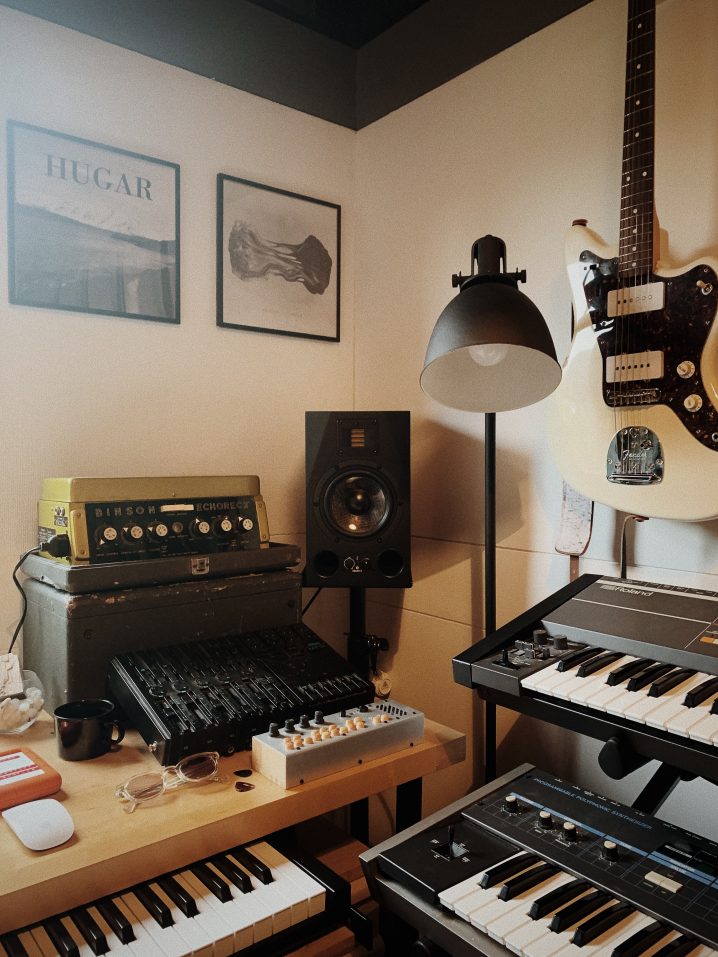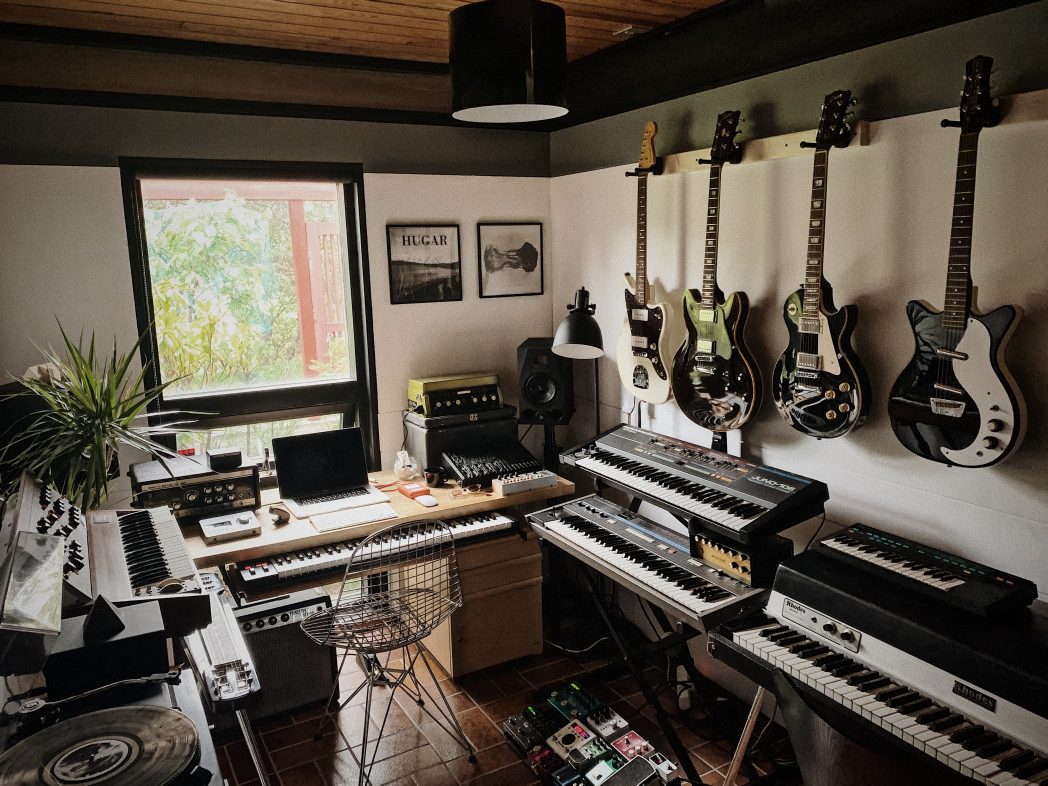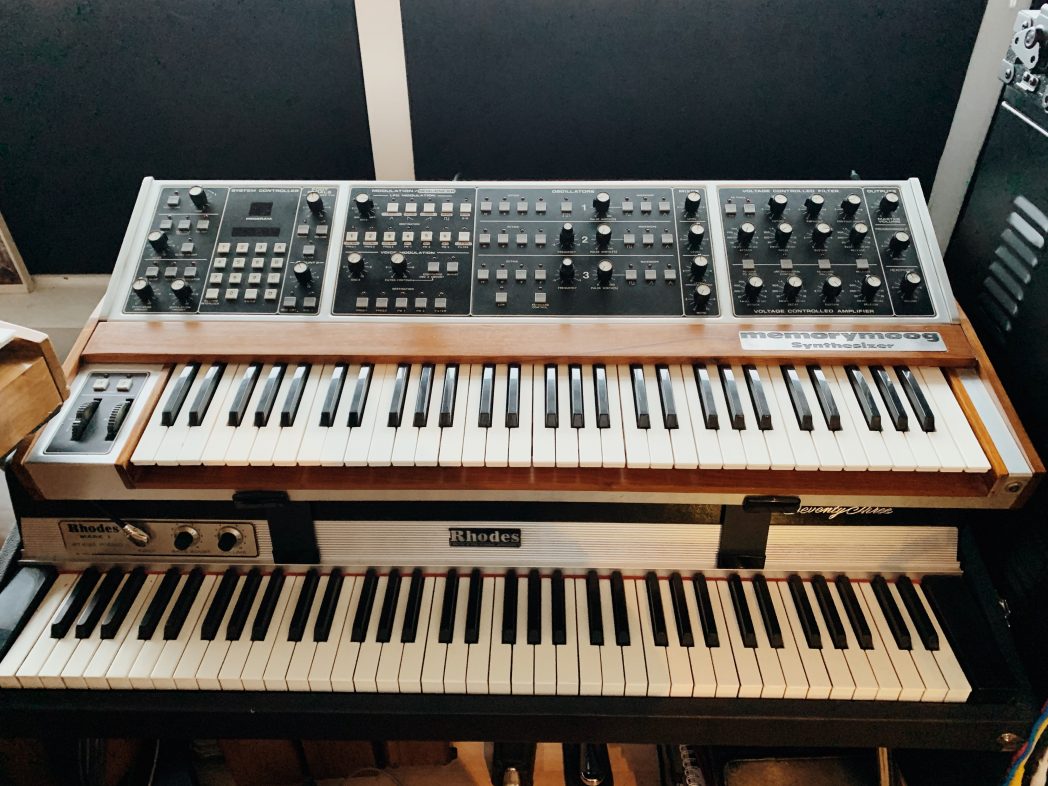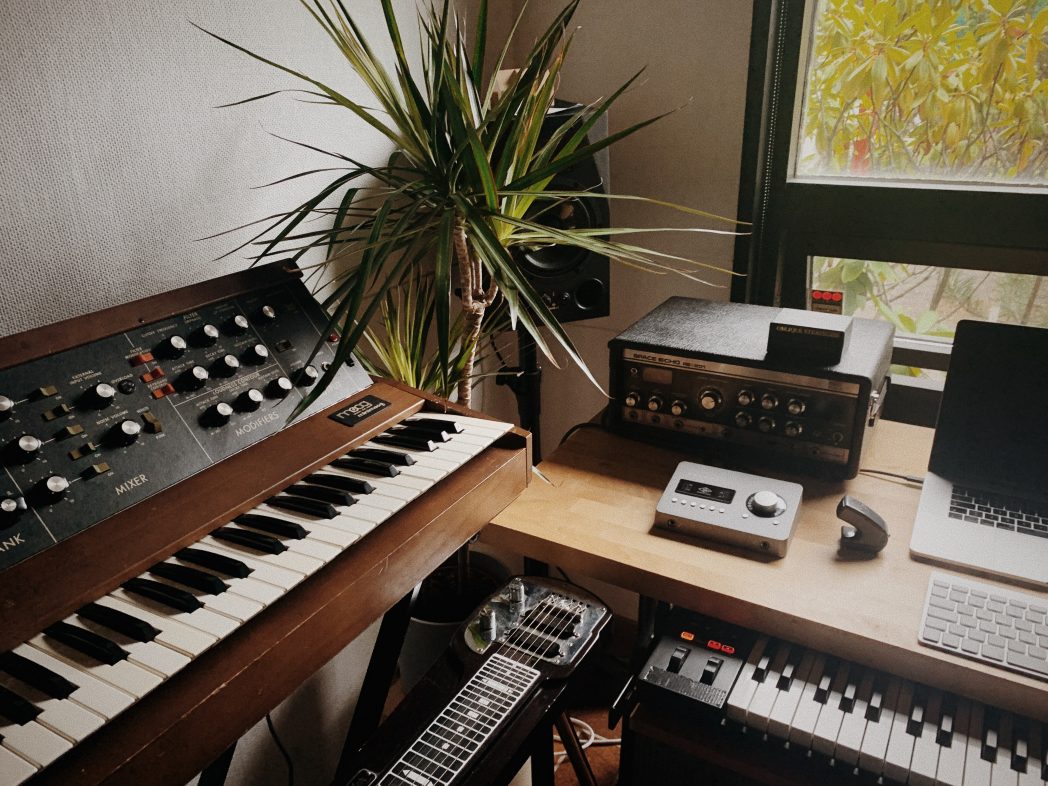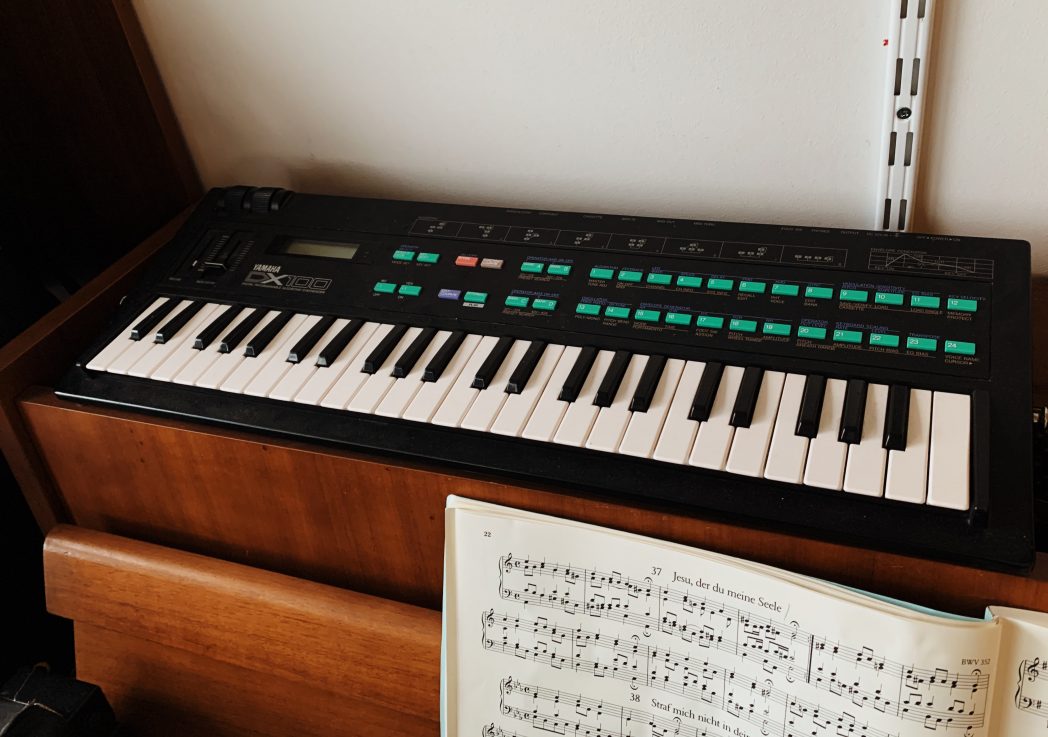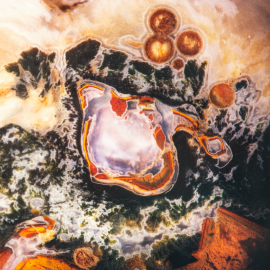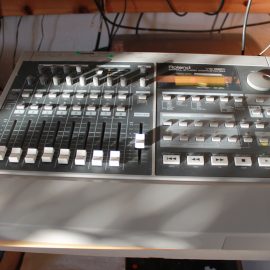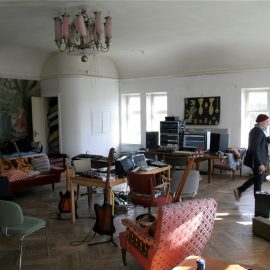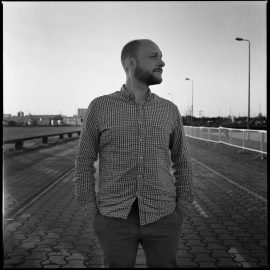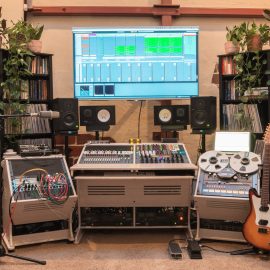Let’s start at the very beginning. Can you tell us how you got involved in composing, and what was your very first piece of gear?
At an early age, we started playing experimental jazz in the Icelandic jazz scene, and alongside that, both of us were playing around with DAW software. We then came together to form Hugar and further developed our composing methods and strategies, featuring a bunch of different hardware and software.
Bergur: The first piece of gear I acquired was a Yamaha DX100 that my father was given when he was young and then he passed on to me. It was a great introduction to synthesizers and FM synthesis in particular.
Pétur: I studied the classical guitar for many years and soon started breaking away from that form and started experimenting with all kinds of different guitar pedals and making textured loops and ambient soundscapes. It was the Line 6 Echo Park that introduced me to the layered loops and additive soundscaping. It was freeing to learn that you could make totally unique sounds from a traditional instrument. Soon after that, I got my hands on my first synthesizer and there was no turning back from there. I started incorporating different elements from different directions and evolving a way to approach and compose music.
How many different studio iterations have you gone through, and what does your final setup look like right now?
We started out working from a friend’s studio that we were very fortunate to be able to borrow for a while. Then we went on to build our own separate studios which have developed through the years. We try to surround ourselves with gear that sparks creativity and ideas so there is quite a lot of vintage gear that makes unpredictable sounds with interesting textures.
Tell us about your favorite piece of hardware.
Bergur: My favorite at the moment is the DBX 500 professional “disco” boom box subharmonic synthesizer. It is a great tool for sculpting the low end of a sound source. However, I also have to mention my Memorymoog which is the most incredible sounding instrument I have ever laid my hands on.
Pétur: At the moment I have been using my Binson Echorec 2 a lot. I like the saturation it gives and the feel of it. You approach the way you play differently which is always a good thing I believe. Then of course the Minimoog Model D is a crucial part of the low end.
And what about the software that you use for production?
We try to use the software as a method of creative thinking and so we use a different DAW for different specific tasks. Most of the work happens in Pro Tools and Logic but we are always open for experimentation in regards to software. For example, Ableton is very powerful when it comes to stretching and tweaking sounds into interesting textures while Logic is great for MIDI work.
Is there a particular piece of gear that you’re just dying to get your hands on and do you think one day you’ll have it?
Bergur: The Korg PS-3300 is at this very moment the instrument of my dreams but as they don’t often come up for sale and the price is astronomical I’m not really expecting that I will be getting one anytime soon.
Pétur: There is something about the EMS Synthi A that has always stuck with me. The sound and the look. Maybe one day…
Can you please share some aspects of sound design in your work?
Recently we have been experimenting with tape machines and tape loops as well as some vintage sound generators. Those bring unexpected flavors that spark new ideas and bring in unpredictable textures. In general, we like to try to make acoustic instruments sound like they are electronic and electronic instruments sound like they are acoustic so quite a lot of our work in sound design is based on that. Sending acoustic recordings through all kinds of processing both external hardware and software processing.
Any particular new techniques that you tried out for your new album?
Our new album is based on a film score we made for a documentary about the pioneering video artists Steina & Woody Vasulka. They were not afraid to experiment with all kinds of strange tech so we took that as inspiration into making the music. We experimented quite a lot with different sound generators going into tape loops on analog tape machines to make sounds that influenced the compositional process.
What does your live setup look like, and what do you bring with you when you travel for an extensive tour?
We have gone through many iterations of our live setup. Since we started touring abroad we have been slowly streamlining the setup. Currently, we utilize the power of MIDI and sampling to bring all of our favorite instruments with us, without having to physically move pianos across countries. We then like to amplify the experience of going to our concerts with lighting and visuals. We have a custom lighting setup with generative lighting that follows what we are playing, all controlled over wireless DMX and we also project grand visuals that follow the same principle.
What is the most important environmental aspect of your current workspace and what would be a particular element that you would improve on?
For us, the most important environmental aspect of a workspace is natural light. Coming from Iceland where the winters can be very dark you really want to use all opportunities of getting some natural lighting. In many studios, people sacrifice the windows for perfect acoustics but we think for the creative process the windows give you more inspiration.
What can you tell us about your overall process of composition? How are the ideas born, where do they mature, and when do they finally see the light?
Our ideas are mostly born through experimentation with different sound sources and just putting in the work. We then go on to process the sounds and adding layers of textures, building up the structure of the song, and continuously building the arrangement. Then we starting peeling down the layers and sculpting the song into a final product. You can always work on composition and develop it further endlessly, however you need to find that gut feeling of it being ready and complete.
After the piece is complete, how do you audition the results? What are your reactions to hearing your music in a different context, setting, or a sound system?
Of course, we work on the music in the studio in good acoustics and with great monitoring but to make absolutely sure it is always good to take a walk by the ocean with headphones, making sure it all feels good and natural and nothing is sticking out too far.
Do you ever procrastinate? If so, what do you usually find yourself doing during those times?
Not really, when we feel like we are about to get stuck, we try to change the environment. We will send some sounds into the pedalboard or some outboard equipment to get a good dose of inspiration which then takes us on a new ride of creativity. If everything fails though, we start drawing cards from the Oblique Strategies card deck by Brian Eno and Peter Schmidt.
What gets you inspired?
Looking out the window with a cup of coffee looking at the mountains and the ocean is a pretty good way to get filled with inspiration. We also like to try to use gear to get inspired, creating unpredictable sounds, and taking it from there. However, the old method of playing piano and recording to voice memos while sleep deprived is also a proven method.
And finally, what are your thoughts on the state of “electronic music” today?
It is really interesting to see the many different fields of music crossing over into each other. Classical composers using electronic sounds in their compositions and electronic artists using elements from the classical world. This is of course nothing new but it is becoming more and more accessible so that more people are starting to incorporate this kind of thinking into their work.
